Das MSMG ToolKit hat ein Update auf die Version 9.3 und gleich hinterher 9.3.1 erhalten. Damit ist es nun auch für die Windows 10 1903 anwendbar. Nach vielen Tests hat MSMG und das Team nun die neue Version zum Download bereitgestellt.
Mit dem MSMG ToolKit ist es möglich aus einer ISO Apps (Cortana etc.) und Komponenten (Treiberupdates und Windwos Updates etc.) zu entfernen. Updates zu integrieren und so eine ISO zu haben, die dann wirklich eine „cleane“ Version von Windows installiert. Aber natürlich darf man nicht zu viel entfernen. Dafür wurde aber ein extra Warnhinweis eingefügt.
Bevor man startet, packt man die ISO in den Ordner ISO, damit das Tool diese dann auch bearbeiten kann. Oder wenn man die ISO schon entpackt hat, dann kommt der Inhalt in den DVD Ordner. Danach muss man eigentlich nur den Anweisungen folgen.
Nachdem man seine ISO erstellt hat, sollte man diese erst ausgiebig in einer virtuellen Umgebung (VirtualBox, VMWare, Hyper-V) testen, bevor man diese dann als primäres Betriebssystem verwendet.
Noch als Hinweis:
- Das MSMG ToolKit unterstützt bei der Windows 10 1903 nur die 18362.1. Diese kann man sich zum Beispiel über diesen Weg holen.
- Mit dem MSMG ToolKit 9.3.2 kann man nun beide Versionen nutzen. Die 18362.1 und auch die 18362.30.
- Man sollte immer erst die Komponenten entfernen und dann Updates integrieren
Die Highlights vom MSMG ToolKit 9.3
- Windows 10 20H1 Insider-Vorschau WADK (v10.0.18890.1000) Tools.
- Unterstützung für Windows 10 Client/Server v1903 Source OS.
- Aktualisierte Pakete für Windows 10 Client/Server v1903 Source OS.
- Microsoft.NET Framework 4.8 Pack für W7/Server 2008R2/W81/Server 2016/v1703/v1709/v1803/2019/v1809 Quellsystem.
- Microsoft.NET Framework 4.8 Language Pack für W7/Server 2008R2 Quellbetriebssystem.
- WHD Update Pack Integration korrigiert für Windows 10 Threshold 1 Source OS.
- WHD Update Pack Integration auf Nur Windows Setup Install Image.
- Korrekturen für die Entfernung von Windows-Komponenten.
- Kamera Barcode Scanner und Augensteuerungssystem Apps Entfernung für Windows 10 Client v1809 Source OS.
- Entfernen von Windows Apps für Windows 10 Client v1903 Quell-Betriebssystem.
- Entfernen Sie die Windows-Komponente mit Hilfe der Paketlistenunterstützung für die Verwendung von ToolKitHelper.
- Aktualisiert Deaktivieren Sie Cortana, Deaktivieren Sie die automatische Treiberinstallation, Deaktivieren Sie die automatischen Windows-Upgrade-Optimierungen.
- Deaktiviert Windows Defender, Windows Update und Microsoft reservierten Speicherplatz.
- Konvertieren der Edition Unterstützung für Windows 10 Client/Server v1903 Source OS.
Changelog MSMG ToolKit 9.3.2
- Updated ToolKit’s Bin folder with Windows 10 20H1 Insider Preview WADK (v10.0.18898.1000) Tools.
- Fixed a Bug in the Feature „Integrate Language Packs“ Where the extraction of Localized Resource files failed for Windows 10 v1607 Client/Server Source OS.
- Updated the Feature „Remove Windows Component“ to support removing Narrator Quick Start System App for Windows 10 v1809 Source OS.
- Updated the Feature „Remove Windows Component“ to support removing Windows Apps for Windows 10 v1903 (v10.0.18362.30) Source OS.
- Fixed a Bug in the Feature „Remove Windows Component Using Package List“ where the Toolkit failed to parse the ToolkitHelper.exe component name if more than one ‚_‘ present.
Changelog 9.3.1
Info aufklappen
+ Fixed a Bug in the Feature „Integrate Windows Features“, Where the Menu Choices where incorrectly displayed.
+ Fixed a Bug in the Feature „Integrate WHD Update Pack“, Where the Menu Choices where not working.
+ Fixed a Bug in the Feature „Integrate WHD Update Pack“, Where the .NET Cumulative integration was skipped due to conditional check failure.
Changelog 9.3.0
Info aufklappen
+ Updated ToolKit’s Bin folder with Windows 10 20H1 Insider Preview WADK (v10.0.18890.1000) Tools.
+ Fixed a Bug in the ToolKit, Where selecting a Windows Server Source Image would terminate the ToolKit.
+ Updated the ToolKit to support Windows 10 Client/Server v1903 Source OS.
+ Fixed a Bug in the Feature „Integrate Language Packs“ Where the extraction of Localized Resource files failed for Windows 10 Client/Server Non-English Source OS.
+ Updated the Feature „Integrate Language Packs“ to Support Windows 10 Client/Server v1903 Source OS.
+ Updated the Feature „Integrate Microsoft .NET Framework 3.5“ to Support Windows 10 Client/Server v1903 Source OS.
+ Added Microsoft .NET Framework 3.5 Pack for MSMG ToolKit for Windows 10 v1903 Source OS.
+ Added a Feature „Integrate Microsoft .NET Framework 4.8“ for Windows 7/ThinPC/Server 2008R2, Windows 8.1/Server 2012R2, Windows 10 v1607/v1703/v1709/v1803/v1809, Windows Server 2016/v1703/v1709/v1803/Server 2019/v1809 Source OS.
+ Added Microsoft .NET Framework 4.8 Pack (Windows 7/Server 2008R2/Windows 8.1/Server 2012R2, Windows 10 v1607/v1703/v1709/v1803/v1809, Windows Server 2016/v1703/v1709/v1803/Server 2019/v1809) for MSMG ToolKit.
+ Updated the Feature „Integrate Microsoft Edge“ to Support Windows 10 v1903 Source OS.
+ Updated the Microsoft Edge Browser Pack for MSMG ToolKit with Windows 10 v1903 – Edge Browser Base + en-US CAB files.
+ Updated the Feature „Integrate Windows Deduplication“ to Support Windows 10 v1903 Source OS.
+ Updated the Microsoft Windows Deduplication Pack for MSMG ToolKit with Windows Server v1903 – Windows Deduplication Base + en-US CAB files.
+ Updated the Feature „Microsoft Windows Accessibility Braille“ to Support Windows 10 v1903 Source OS.
+ Updated the Microsoft Windows Accessibility Braille Pack for MSMG ToolKit with Windows 10 v1903 – Windows Accessibility Braille CAB files.
+ Updated the Feature „Open Secure Shell (SSH)“ to Support Windows 10 v1903 Source OS.
+ Updated the Open Secure Shell (SSH) Pack for MSMG ToolKit with Windows 10 v1903 – Open Secure Shell (SSH) Client & Server CAB files.
+ Updated the Feature „Integrate Windows To Go“ to Support Windows 10 v1903 Source OS.
+ Updated the Microsoft Windows To Go Pack for MSMG ToolKit with Windows 10 v1903 – Windows Deduplication Base + en-US CAB files.
+ Updated the Feature „Integrate Multimedia Restricted Codecs“ to Support Windows Server v1903 Source OS.
+ Updated the Multimedia Restricted Codecs Pack for MSMG ToolKit with Windows 10 v1903 – Multimedia Restricted Codecs Base + en-US CAB files.
+ Updated the Feature „Integrate Windows Portable Devices“ for Windows 10 v1903 ‚N‘ Editions Source OS.
+ Updated the Windows Portable Devices Pack for MSMG ToolKit with Windows 10 v1903 – Portable Devices Base + en-US CAB files.
+ Updated the Feature „Integrate Windows Subsystem for Linux (WSL)“ to Support Windows Server v1903 Source OS.
+ Updated the Windows Subsystem for Linux (WSL) Pack for MSMG ToolKit with Windows 10 v1903 – Windows Subsystem for Linux (WSL) Base + en-US CAB files.
+ Updated the Feature „Integrate Microsoft Windows Media Feature Pack“ to Support Windows 10 v1903 Source OS.
+ Added Microsoft Windows Media Feature Pack (Windows 10 v1903) for MSMG ToolKit.
+ Updated the Feature „Integrate Microsoft DaRT Tools“ to Support Windows 10 Client/Server v1903 Source OS.
+ Updated Microsoft DaRT Pack (Windows 10) for MSMG ToolKit with Windows 10 v1903 (v10.0.18362.1) Debug Tools.
+ Fixed Filesystem ACL Issues with Microsoft DaRT Pack for MSMG ToolKit.
+ Updated the Feature „Integrate WHD Update Pack“ with Cumulative Update Integration fix for Windows 10 v1507 Source OS (Thanks to MDL Member: abbodi1406).
+ Added a Sub Menu to the Feature „Integrate WHD Update Pack“ to Integrate Updates to Windows Setup Install Image.
+ Updated the Feature „Integrate WHD Update Pack“ to Integrate Updates to Windows Setup Install Image.
+ Fixed Filesystem ACL Issues with Windows Media Center Generic Tokens Pack for MSMG ToolKit.
+ Fixed Bugs in the Feature „Remove Windows Component“ related to shared components removal for Windows 10 v1809 Source OS.
+ Fixed a Bug in the Feature „Remove Windows Component“, Where Windows Setup would fail when removing all components for Windows 10 v1809 64-bit Source OS.
+ Fixed a Bug in the Feature „Remove Windows Component“, Where Windows Setup would fail when integrating Cumulative Update after the component removal for Windows 10 v1809 Source OS.
+ Fixed a Bug in the Feature „Remove Windows Component“, Where Removing Edge Browser App would remove Windows To Go instead of Windows Reader (PDF) for Windows 10 v1809 Source OS.
+ Updated the Feature „Remove Windows Component“ to support removing Camera Barcode Scanner and Eye Control System Apps for Windows 10 v1809 Source OS.
+ Updated the Feature „Remove Windows Component“ to support removing Windows Apps for Windows 10 v1903 Source OS.
+ Updated the Feature „Remove Windows Component Using Package List“ to support ToolkitHelper.exe method for Windows 10 v1809/v1903 Source OS.
+ Updated the Feature „Apply Tweaks“ with Improvements to Disable Cortana, Disable Automatic Drivers Install, Disable Automatic Windows Upgrade Tweaks.
+ Added a Tweak „Disable Windows Defender“ under Customize->Tweaks Menu.
+ Added a Tweak „Disable Windows Update“ under Customize->Tweaks Menu.
+ Added a Tweak „Disable Microsoft Reserved Storage Space for Windows Updates“ under Customize->Tweaks Menu.
+ Updated the Feature „WIM Manager->Convert Edition“ to Support Windows 10 Client/Server v1903 Source OS.
Bekannte Probleme
- Die Verwendung von ToolKit bei aktivierten Antivirenprogrammen kann sich auf die Operationen des ToolKits auswirken.
- ToolKit’s ToolKitHelper.exe kann als Virus/Trojaner/Malware-Programm gekennzeichnet werden, keine Sorge, es ist nur ein falsches positives Zeichen.
- Das ToolKit kann/wird das Post-Servicing von ToolKit gewarteten Source-Images mit anderen ähnlichen Tools nicht unterstützen.
- Windows 8.1 – Die Integration des Windows Remote Server Administration Tool (RSAT) zusammen mit anderen Funktionen führt zu einem Abbruch der Integration mit einem Fehlercode 0x80092004.
- Windows 7/8.1/10 – Integrieren/Installieren von Windows Updates/Kumulative Updates nach dem Entfernen der Komponente kann selten entfernte Komponentenressourcen wiederherstellen oder Dateien/Ordner verknüpfen.
- Windows 10 Redstone 2/3/4/5/6 – Wenn das Bild des benutzerdefinierten Benutzerkontos integriert ist, wird das Bild nicht im Anmeldebildschirm angezeigt, obwohl es im Startmenüsymbol angezeigt wurde.
- Windows 10 Redstone 5/6 – Microsoft Spiele, Windows Media Player/PhotoViewer/Win32Calc Skins Funktionen funktionieren nicht.
- Windows 10 Redstone 3/4/5/6 – Es wurde berichtet, dass in der Format USB-Funktion der Diskpart Befehl „list“ nicht funktioniert, wenn er im Skript verwendet wird.
Info und Download Toolkit 9.3.x:
- mydigitallife
- Download: M-Drive oder andere Möglichkeiten (Toolkit 9.3.x)
Windows 10 Tutorials und Hilfe
In unserem Windows 10 Wiki findet ihr sehr viele hilfreiche Tipps und Tricks. Falls ihr Fragen habt, dann stellt diese ganz einfach bei uns im Forum.
- Installationsmedien: Aktuelle Installationsdateien findet ihr hier immer in der rechten Sidebar. Windows 10 1903 ISO (18362)
- Installation:: Windows 10 Clean installieren, Win 10 1903 neu installieren, Win 10 1809 neu installieren
- Probleme bei der Installation: Windows 10 1809 Probleme bei der Installation, Win 10 1803 lässt sich nicht installieren
- Reparaturen: Inplace Upgrade Reparatur, Win 10 reparieren über DISM, sfc und weiteres, Windows Update reparieren, Startmenü reparieren, Apps reparieren, Store reparieren, Netzwerk reparieren
- Anmeldung: Win 10 automatische Anmeldung
- Entfernen, Deinstallieren: Cortana deaktivieren, Apps deinstallieren
- Datei Explorer: Ordner unter Dieser PC entfernen, Netzwerk, OneDrive u.a. im Explorer entfernen
- Richtige Nutzung: Startmenü richtig nutzen, Suche richtig nutzen,
- Wichtig: In jedem Tutorial steht, für welche Version es geeignet ist.

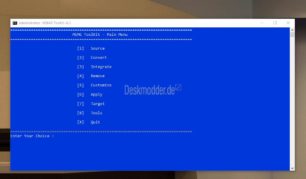
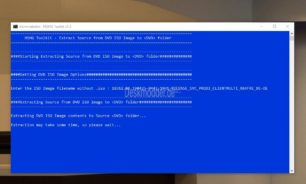
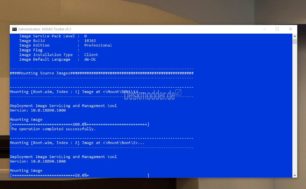
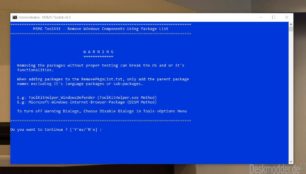
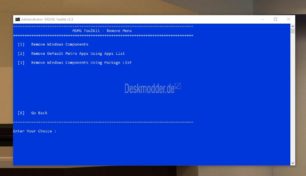

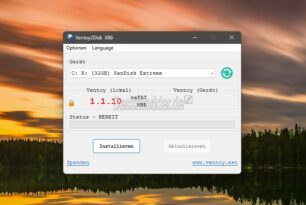

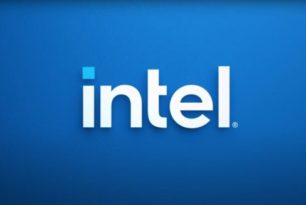
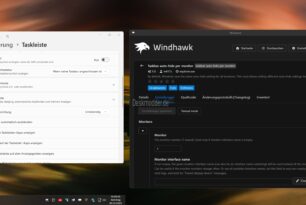
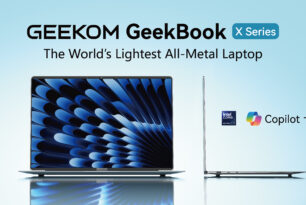
Bin schon am basteln!
v9.3.1 gerade freigegeben.
+ Fixed a Bug in the Feature „Integrate Windows Features“, Where the Menu Choices where incorrectly displayed.
+ Fixed a Bug in the Feature „Integrate WHD Update Pack“, Where the Menu Choices where not working.
+ Fixed a Bug in the Feature „Integrate WHD Update Pack“, Where the .NET Cumulative integration was skipped due to conditional check failure.
Steht oben schon.
Nachdem man seine ISO erstellt hat, sollte man diese erst ausgiebig in einer virtuellen Umgebung (VirtualBox, VMWare) testen, bevor man diese dann als primäres Betriebssystem verwendet.
finde das sehr schade dass bei Virtualisierung immer nur Fremdprodukte vorgeschlagen werden und auf die boardeigenen Mittel nicht mal hinweist, sehr enttäuschend!!
Wovon genau redest du?
Er meint vermutlich, dass in dem Artikel zum Testen der selbsterstellten ISO nur VirtualBox und VMWare erwähnt wurde, jedoch nicht Hyper-V.
Achsooo, ja gut hab ich vergessen. Aber sofort nachgeholt.
er meinte (sicherlich) das VMware und VirtualBox genannt wird zum testen aber das Windows-eigene Pendant nicht
was auch ich zu 100% nur nutze – warum sollte ich etwas zusätzlich installieren was schon (intern) vorhanden ist ?
sooo, mein Rechner „schmeißt“ mich gleich ins Bett – der schaltet gleich automatisch ab
Ein Typ 2 Hypervisor wie Hyper-V stellt keine zuverlässige Umgebung für Enterprise-Unternehmen dar.
Es gibt seitens Microsoft keine Methoden um gehostete virtualisierte Systeme hochverfügbar zu halten und gleichzeitig die Hostsysteme auf einem aktuellen Patchstand zu halten. Microsoft rät die Hyper-V-Hosts nicht zu Pärchen….
Da ist mir VMware Vsphere mit seinem HA-Konzept auf Basis von EVC sympathischer.
Im Prinzip hast du vielleicht Recht
( kenne aber VMware & auch VirtualBox nicht , aber darauf wollte ich auch nicht hinaus, jeder benutzt halt das was er am besten findet / womit er am schnellsten zurecht kommt).
Worauf ich allerdings hinaus will, diese Blogs sind ja nicht nur für Firmen sondern auch Privatanwender, und da reicht (meiner Meinung) nach Hyper-V (z.B. zum testen einer selbst erstellten ISO ) allemale aus. – zumal es auch schon in diversen Threads beschrieben wurde das z.B. manche virtuelle Umgebungen mit manchen Builds auch Probleme haben, ergo warum sollte sich ein Privatanwender
( evtl. sogar einer der sich in der Regel mit der Materie nicht so auskennt) sich dann mit externen Programmen beschäftigen ?
@TecMedicine:
Hyper-V sowie VMware vSphere sind beides Typ-1 Hypervisoren (Bare Metal Hypervisor).
VMware Workstation/Player und Virtual Box sind Typ-2 Hypersonoren (Hosted Hypervisor).
@Manny:
An Hyper-V stört mich halt, dass das Windows selbst bereits visualisiert wird (geht nicht anders), auch wenn es eine spezielle VM ist und dass man damit nicht unbedingt das Selbe mit machen kann, wie mit VMware Workstation. Von Virtual Box bin ich da derzeit auch nicht so der Fan, das gerade Windows 10 dort irgendwie ziemlich träge läuft. Aber wenn man Hyper-V nur zum testen von ISOs benötigt und sich nicht daran stört, dass das System an sich leicht träger wird, kann man es durchaus gebrauchen.
@DK2000
genau das meinte ich auch – jeder so wie es ihm beliebt – ich teste ISOS in der VM (Hyper-V) eigentlich NUR um die spätere Installation zu testen ob die einwandfrei läuft ( Starten – bei Multiedition die Menüauswahl und ob – wenn es eine ISO mit kumulativen Updates ist – auch das vorhandensein der richtigen KB´s bzw. ob Erstellung auch die richtige Buildnummer ergab). Das alles NUR für „Standard-ISOS“ ( über adguard bzw. UUPDump erstellte )
modifiziere ich eine solche ISO ( für den Eigengebrauch) aber auch noch mit Treibern etc. teste ich eine solche ISO schon ewig nicht mehr mit einer VM – da wartet dann immer eine „Test-SSD“ ob alles richtig gemacht wurde von mir, weil in einer VM man nicht alles testen kann
( jeden Falls nicht mit Hyper-V)
Noch als Hinweis:
Das MSMG ToolKit unterstützt bei der Windows 10 1903 nur die 18362.1. Diese kann man sich (Link zu UUPDump)
und seit heute wieder diese „Urversion“ (Home / Pro) unter
https://www.deskmodder.de/blog/2019/03/23/1903-18362-iso-esd-deutsch-english/
Gibt es ein Tut wie das MSMG ToolKit funktioniert?